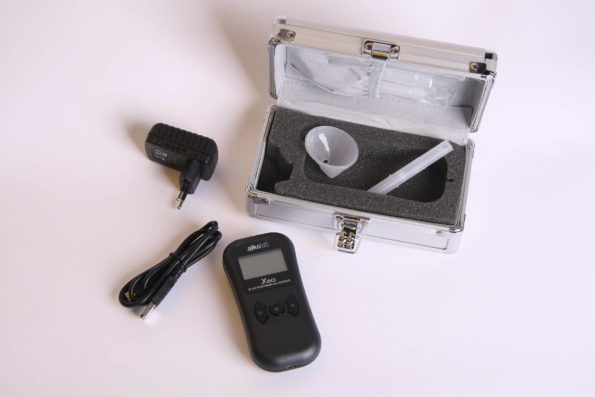The main reasons why breathalysers are used is to determine whether a person behind the wheel is driving under the influence of alcohol, either as a roadside test by traffic officers or in use as part of an ignition interlock device to stop recidivist drink drivers. Driving with excess blood alcohol is one of the most dangerous things that an individual can do to put his life and the lives of others at risk. In line with this, you will often find police officers and traffic enforcers carrying a breathalyser with them, but how do these devices determine the level of alcohol in the blood?

Semiconductor oxide-based testers
With a semiconductor oxide-based tester, an ethanol-specific sensor is used to measure the blood alcohol content (BAC) of a person. The person simply breathes into the device, and the breath sample is bubbled in one of the two glass vials that contain a chemical reaction mixture. To determine the amount of alcohol, the vial with the reacted mixture is compared to the vial with the unreacted mixture. More often than not, this type of breathalyser is sufficient in providing accurate and reliable readings.
Fuel cell testers
Another type of breathalyser is powered by fuel cell sensors that offer extremely high accuracy and sensitivity. Not only this, but fuel cell testers are also portable, which is why if you want to buy a breathalyser to be given as a gift or to use personally, then you should go for one that is powered by the fuel cell technology. These are considered as the best breathalysers because they can deliver a high degree of reliability. With a fuel cell tester, the alcohol content is measured through a chemical reaction that oxidizes the alcohol in the sample. As the alcohol is oxidized, acetic acid, protons, and electrons are produced, with the electrons flowing through a wire from the platinum electrodes partitioned by a porous acid-electrolyte material.
This then produces an electrical current, wherein a greater alcohol content will produce a greater current. A microprocessor measures this current to calculate the BAC.
Infrared spectroscopy
Certain breathalysers operate through the concept of infrared (IR) spectroscopy. In this case, molecules are identified based on the way that they absorb IR light waves. Once a molecule absorbs IR light, their vibrations change, bending and stretching their bonds. Each of these bonds absorbs IR light at different wavelengths. Therefore, to identify the molecular composition of alcohol, the absorbed wavelength needs to be determined.
With a device working under the IR spectroscopy concept, a lamp generates a broadband IR beam that passes through a sample chamber onto a spinning filter wheel. This wheel contains narrowband filters wherein the light that passes through the filter is detected by the photocell and converted into an electrical pulse.
There are several ways how breathalysers detect the level of alcohol in the blood of a person. Some are based on semiconductor oxide, while others utilize fuel cells or infrared spectroscopy. Each has its advantages and drawbacks, but the important thing is that regardless of the technology behind the device, a breathalyser will still be able to determine whether a person is intoxicated or not.
